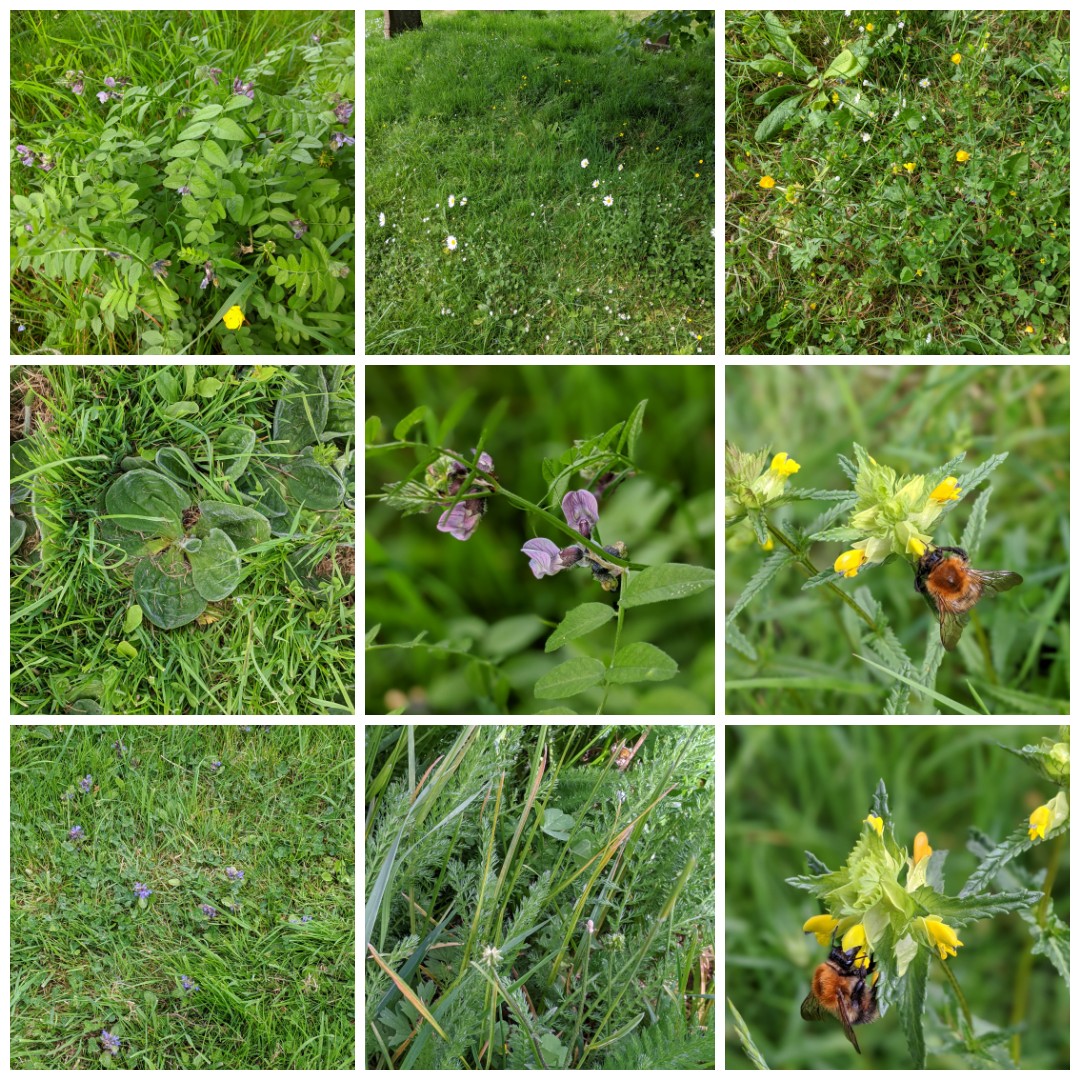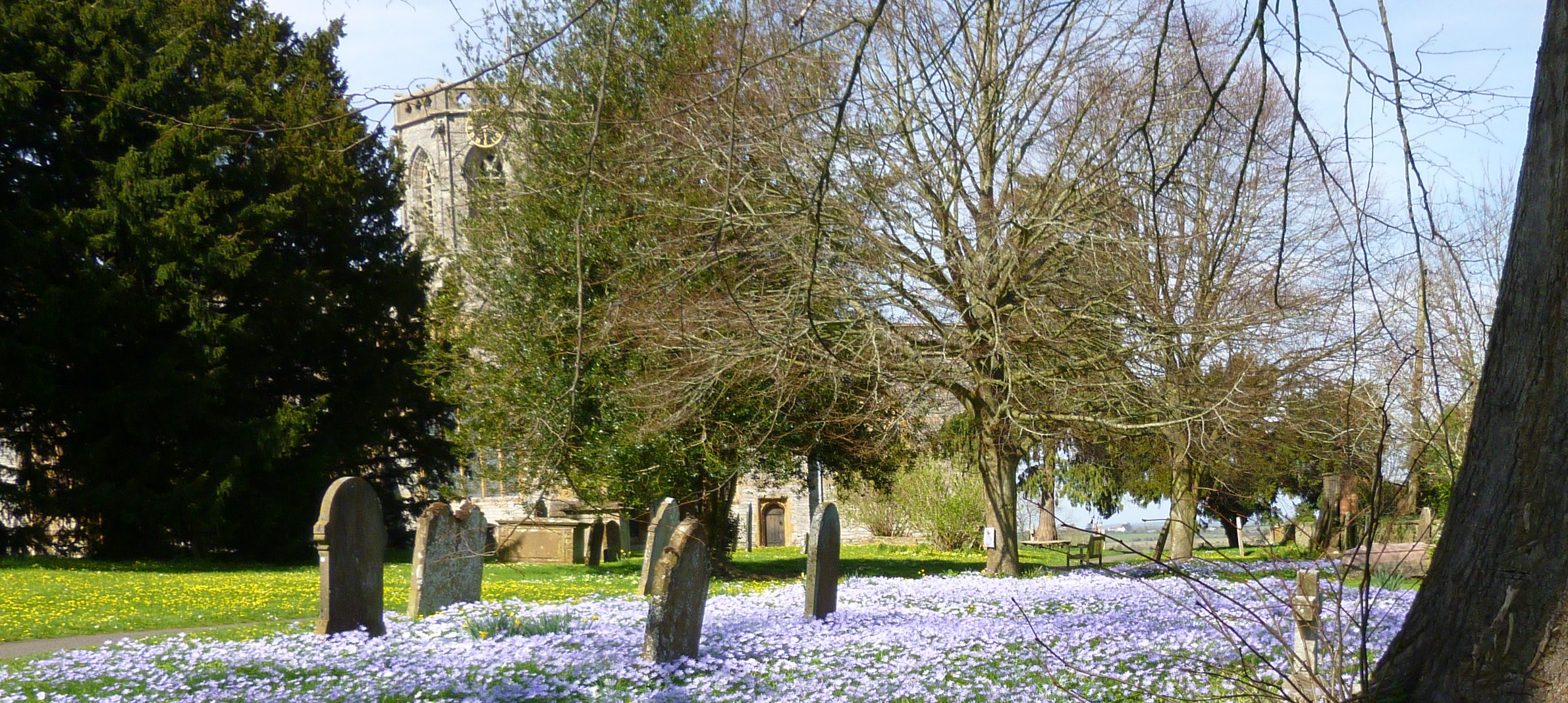
THE CHURCHYARD
Text and pictures Sue Ashton and Sarah Shuttleworth
The churchyard is a great place for wildlife, particularly in the spring. There is always a wonderful display of snowdrops in January, and the pale purple crocuses by the kissing gate in the south-east corner are an early source of nectar for queen bumblebees and overwintering butterflies tempted out on a sunny day.
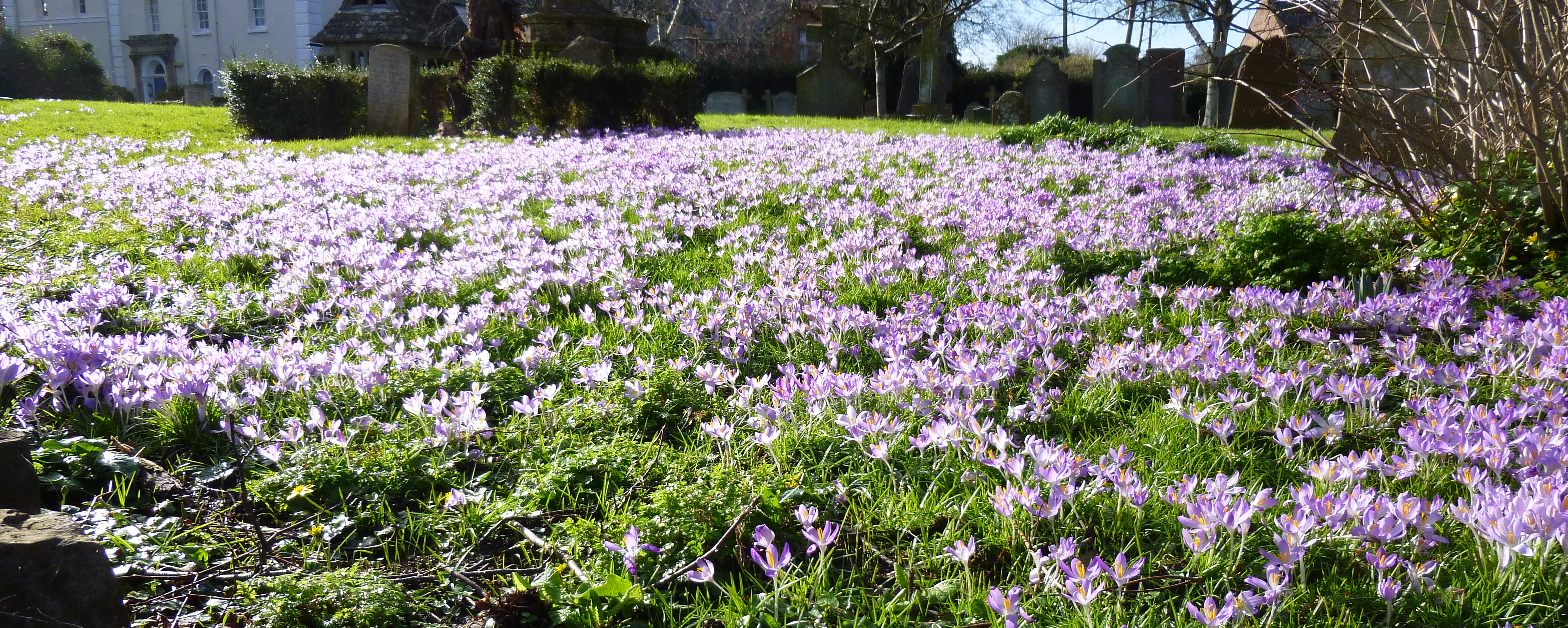 Purple crocuses in February provide early nectar for overwintering insects
Purple crocuses in February provide early nectar for overwintering insects
Other spring flowers include glossy golden celandines and pale yellow primroses and the magnificent display of purple anemones or windflowers for which the churchyard is justly famous. So that these can set seed, the grass is not cut on the eastern side of the path till later in the season for the benefit of many insects.
 The display of anemones for which the churchyard is so well known
The display of anemones for which the churchyard is so well known
The churchyard in the spring is a good place to see Orange Tip and Brimstone butterflies. Look out too for Peacocks and Small Tortoiseshells. By April, if you look up in the tops of the yews, especially on the eastern side of the path to the church porch, you may be able to see small Holly Blue butterflies against the dark green of the yew foliage. You may also see a Red Admiral basking on a sunny tombstone.
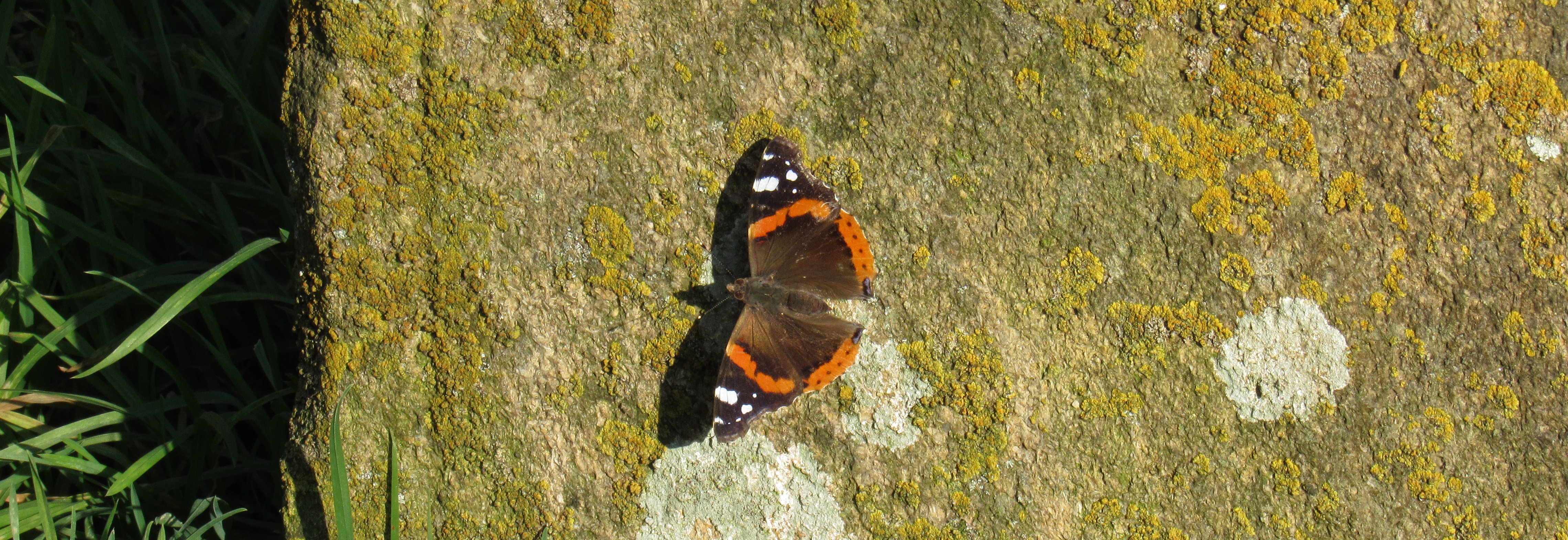 Red Admiral basking in spring sunshine
Red Admiral basking in spring sunshine
The church also benefits from a rookery in the large trees adjacent to its eastern side. The calls of the rooks have become a very characteristic churchyard sound, and the beginning of nest building is a sure sign of spring! Look out too for Goldcrests in the yews on either side of the path to the church door. Many other birds can be seen in the churchyard or in the field below the church, including Great Spotted Woodpecker and Nuthatch.
 Early nest building in the rookery next to the churchyard
Early nest building in the rookery next to the churchyard
Thanks to our Awards for All grant from the National Lottery Community Fund we were able to add more nest boxes to the churchyard in 2019: four tit boxes, one suitable for a robin and one for a flycatcher. Do look out for any activity around these boxes in the spring.
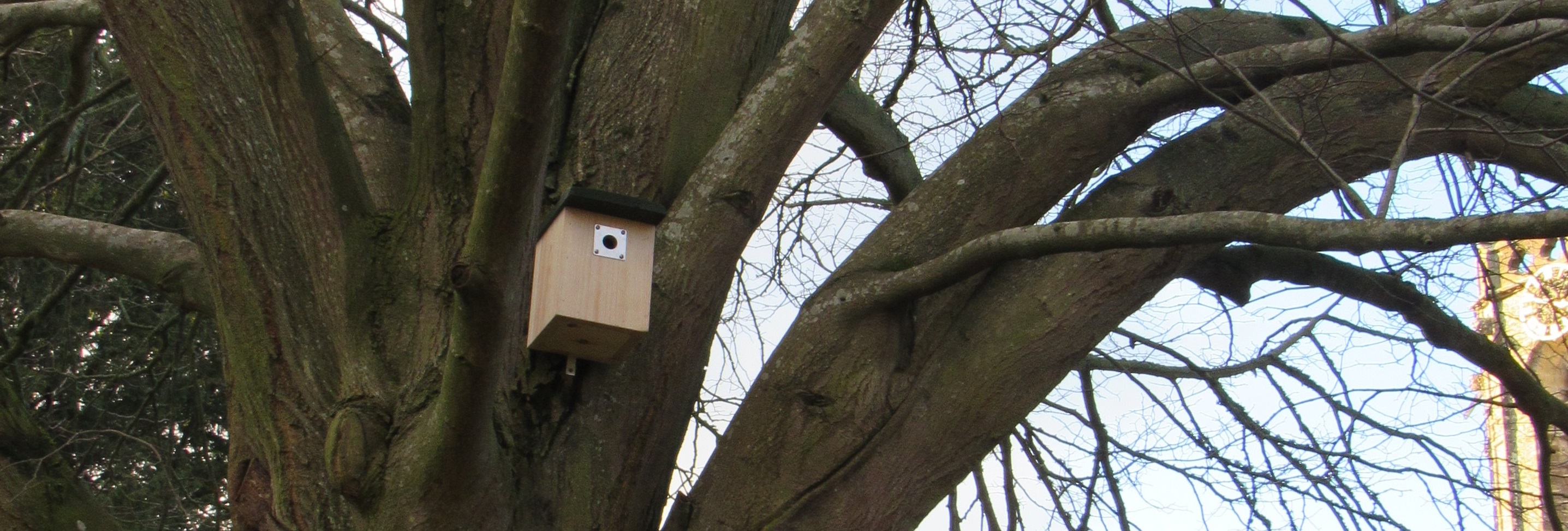 Tit box put up in 2019
Tit box put up in 2019
In spring 2021, we were able to add a box for Little Owls and a basket for Long-eared Owls.
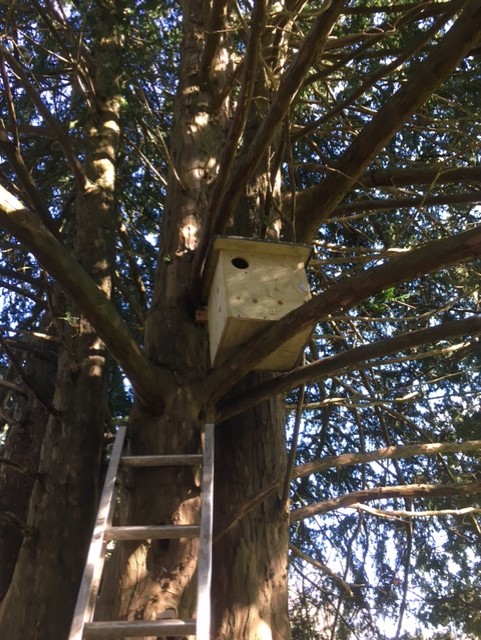 Little Owl box put up within the yews (photo: Phil Stone)
Little Owl box put up within the yews (photo: Phil Stone)
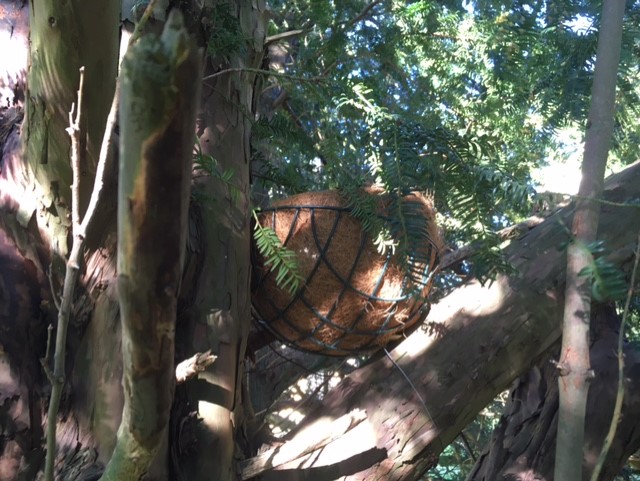
Basket for Long-eared Owls (photo: Phil Stone)
The Wildlife Area
An area of the churchyard on the eastern side (to the east of the path leading from the kissing gate towards the field below the church) is becoming the churchyard’s wildlife area. For the past few years, the grass has been left uncut for longer along this strip for the benefit of invertebrates, and primroses in particular have begun to spread here.
A section of laurel hedge on the eastern boundary was removed and replaced with a wildlife-friendly hedge of mixed native species in February 2017. This included hawthorn, blackthorn, buckthorn, hazel, crab apple, guelder rose and dog rose which all supply food for birds and insects.
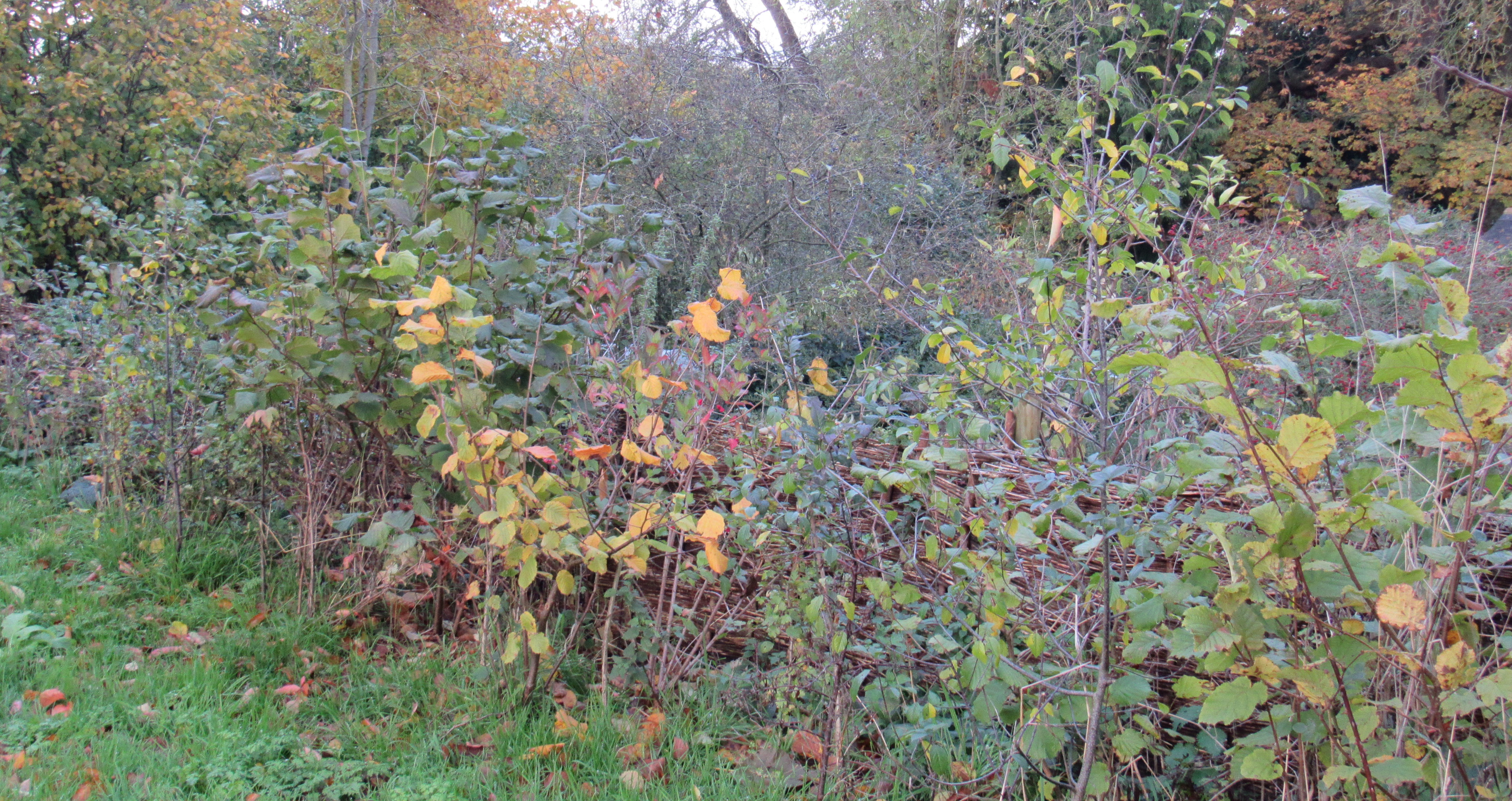 Mixed wildlife-friendly hedge along the eastern boundary
Mixed wildlife-friendly hedge along the eastern boundary
In August 2019, Sarah Shuttleworth of the wildlife group offered to undertake a full botanical survey of the churchyard, the results of which it was hoped could inform which areas can be enhanced for wildlife. The wildlife area, despite being left to grow long during the summer, was generally floristically poor and dominated by coarse grasses. After speaking with Lorraine Bryan Brown about her ideas to develop this area, it was decided to seed the sunnier areas with Yellow Rattle, a native meadow species which is semi-parasitic on grasses and reduces their vigour and dominance, allowing more wild flower species to be introduced.
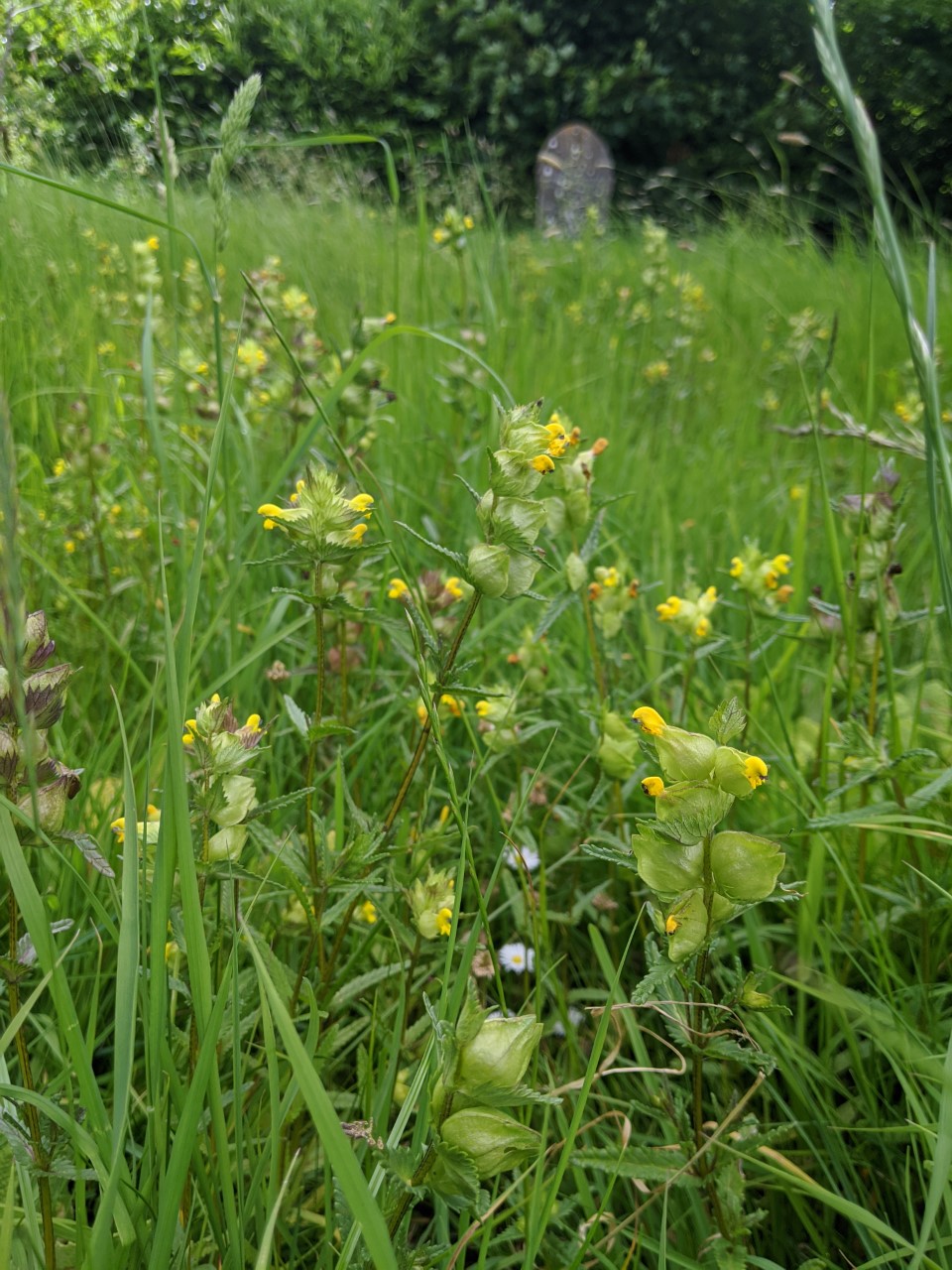 Yellow Rattle in flower in spring 2020
Yellow Rattle in flower in spring 2020
In order to ensure this initial stage was successful, the area needed to be scarified before sowing in October. Sarah was able to reassure interested parties that none of these activities would affect the appearance of the Wood Anemone cultivar and primroses in the spring as these plants would have finished flowering before the Yellow Rattle begins to get established.
It was therefore very pleasing to discover in the spring of 2020 that so much of the Yellow Rattle had successfully germinated and was already flowering, especially as it can be a tricky plant to get going as the seed needs vernalisation over winter. It was already attracting bees and would later begin forming the rattling seed heads that give it its name and ensure that a good population continues in the area.
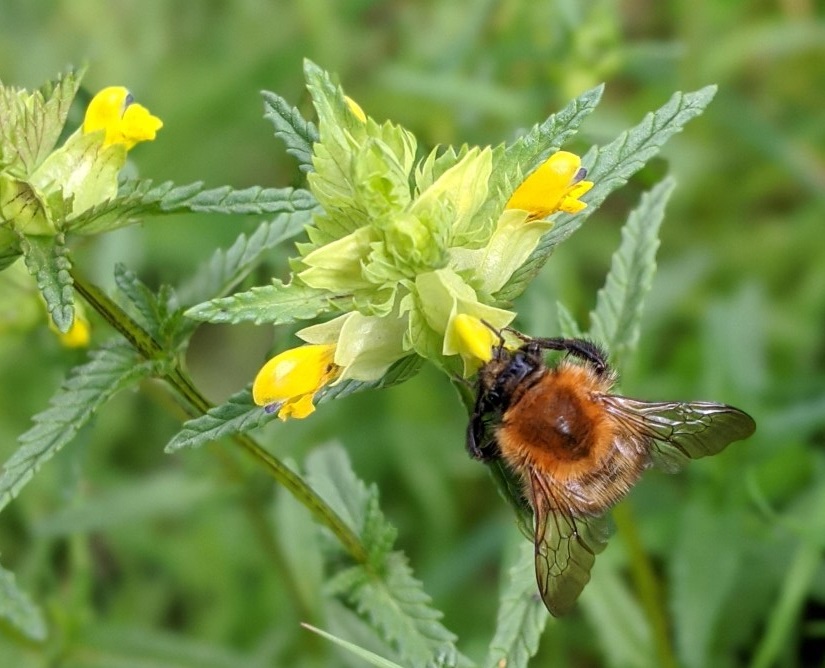 Common Carder Bee on Yellow Rattle flowerhead
Common Carder Bee on Yellow Rattle flowerhead
The next stage will be to sow more wild flower seed in the autumn of 2020 from a UK native source, including Common Bird’s-foot Trefoil (great for butterflies, particularly Common Blue), Lady’s Bedstraw, Field Scabious, Meadow Cranesbill, Meadow Vetchling and Common Knapweed. These are all neutral lowland grassland species that should do well in the conditions.
Before sowing, the sward will need to be cut in September with the risings (cuttings) removed after a maximum of two days to allow the seeds (from the Yellow Rattle or other species like Spotted Medick that already occur) to disperse into the ground. The risings need to be removed to prevent a build-up of nutrients in the soil, which ultimately encourage proliferation of coarse grasses, docks, nettles and thistles, as wild flowers do better in less competitive, nutrient-poor conditions.
Our plan was to involve the school children as much as possible in the wildlife area, but given the situation faced by all of us in 2020 due to Covid-19 this had to be reviewed. We nevertheless hope that in the future they will be involved in further planting and monitoring of the site.
